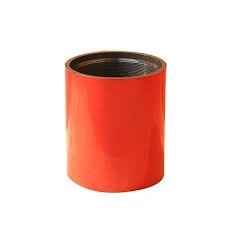- Afrikaans
- Albanian
- Amharic
- Arabic
- Armenian
- Azerbaijani
- Basque
- Belarusian
- Bengali
- Bosnian
- Bulgarian
- Catalan
- Cebuano
- Corsican
- Croatian
- Czech
- Danish
- Dutch
- English
- Esperanto
- Estonian
- Finnish
- French
- Frisian
- Galician
- Georgian
- German
- Greek
- Gujarati
- Haitian Creole
- hausa
- hawaiian
- Hebrew
- Hindi
- Miao
- Hungarian
- Icelandic
- igbo
- Indonesian
- irish
- Italian
- Japanese
- Javanese
- Kannada
- kazakh
- Khmer
- Rwandese
- Korean
- Kurdish
- Kyrgyz
- Lao
- Latin
- Latvian
- Lithuanian
- Luxembourgish
- Macedonian
- Malgashi
- Malay
- Malayalam
- Maltese
- Maori
- Marathi
- Mongolian
- Myanmar
- Nepali
- Norwegian
- Norwegian
- Occitan
- Pashto
- Persian
- Polish
- Portuguese
- Punjabi
- Romanian
- Russian
- Samoan
- Scottish Gaelic
- Serbian
- Sesotho
- Shona
- Sindhi
- Sinhala
- Slovak
- Slovenian
- Somali
- Spanish
- Sundanese
- Swahili
- Swedish
- Tagalog
- Tajik
- Tamil
- Tatar
- Telugu
- Thai
- Turkish
- Turkmen
- Ukrainian
- Urdu
- Uighur
- Uzbek
- Vietnamese
- Welsh
- Bantu
- Yiddish
- Yoruba
- Zulu
Bull Plug Pipe Configuration for Efficient Fluid Flow Management
Understanding Bull Plug Pipe Layout An In-Depth Guide
In industrial piping systems, efficient design and layout are crucial for the seamless transportation of fluids. Among various components, bull plugs play a vital role in ensuring that systems operate effectively. This article delves into the bull plug pipe layout, its importance, applications, and best practices for installation.
What is a Bull Plug?
A bull plug is a type of fitting used in piping systems to close off a pipe end. It is essentially a solid plug that can be inserted into the opening of a pipe, providing a leak-proof seal. Bull plugs are typically made from materials like steel, brass, or PVC, depending on their application. Their primary function is to block the flow of fluids in situations where a temporary or permanent closure is required.
Importance of Bull Plug Pipe Layout
The layout of bull plugs within a piping system is crucial for various reasons
1. Safety Properly installed bull plugs prevent accidental leaks or spills, which can lead to hazardous situations in industrial environments. 2. System Integrity Bull plugs help maintain the integrity of the piping system, allowing for maintenance and inspection without disrupting fluid flow in other areas.
3. Prevention of Contamination By sealing off pipes that are not in use, bull plugs prevent the ingress of contaminants, ensuring that fluids remain pure and uncontaminated.
4. Flexibility Bull plugs provide the flexibility to modify existing systems. They can be installed to close off unused sections of piping, allowing for future expansion or changes without significant alterations to the layout.
Applications of Bull Plugs
Bull plugs are used across various industries, including
bull plug pipe layout

- Oil and Gas In oil and gas piping systems, bull plugs are essential for closing off inactive lines, allowing for safe operation and maintenance. - Water Treatment In water treatment facilities, bull plugs are used to seal off outdated or unused lines, preventing contamination and facilitating repairs.
- Construction When building structures, bull plugs can be used in temporary piping systems to manage fluid flow until the permanent system is in place.
- Manufacturing In manufacturing plants, bull plugs are utilized to isolate specific sections of piping for maintenance, testing, or decommissioning.
Best Practices for Bull Plug Installation
1. Material Selection Choose the right material for the bull plug based on the fluid being contained and the operating conditions. Compatibility with the fluid is critical to prevent material degradation.
2. Proper Sizing Ensure that the bull plug is the correct size for the pipe. A snug fit minimizes the risk of leaks and ensures a secure closure.
3. Use of Sealing Agents Depending on the application, consider using sealing agents or thread sealants to enhance the leak-proof characteristics of the installation.
4. Regular Inspections Periodically inspect bull plugs and the surrounding piping for signs of wear, corrosion, or damage. This proactive approach helps maintain system integrity.
5. Documentation Keep detailed records of all installations, including materials used, installation dates, and maintenance schedules. This information can prove invaluable during audits and system evaluations.
Conclusion
Bull plugs are a critical component of effective piping system design and operation. Their strategic placement can enhance safety, maintain system integrity, and allow for flexibility in industrial applications. By understanding the importance of bull plug pipe layout and adhering to best practices in their installation, companies can ensure that their piping systems remain reliable and safe for years to come. As industries continue to evolve and face new challenges, the role of bull plugs will undoubtedly remain significant in facilitating efficient fluid management.
-
Tubing Pup Joints: Essential Components for Oil and Gas OperationsNewsJul.10,2025
-
Pup Joints: Essential Components for Reliable Drilling OperationsNewsJul.10,2025
-
Pipe Couplings: Connecting Your World EfficientlyNewsJul.10,2025
-
Mastering Oilfield Operations with Quality Tubing and CasingNewsJul.10,2025
-
High-Quality Casing Couplings for Every NeedNewsJul.10,2025
-
Boost Your Drilling Efficiency with Premium Crossover Tools & Seating NipplesNewsJul.10,2025







